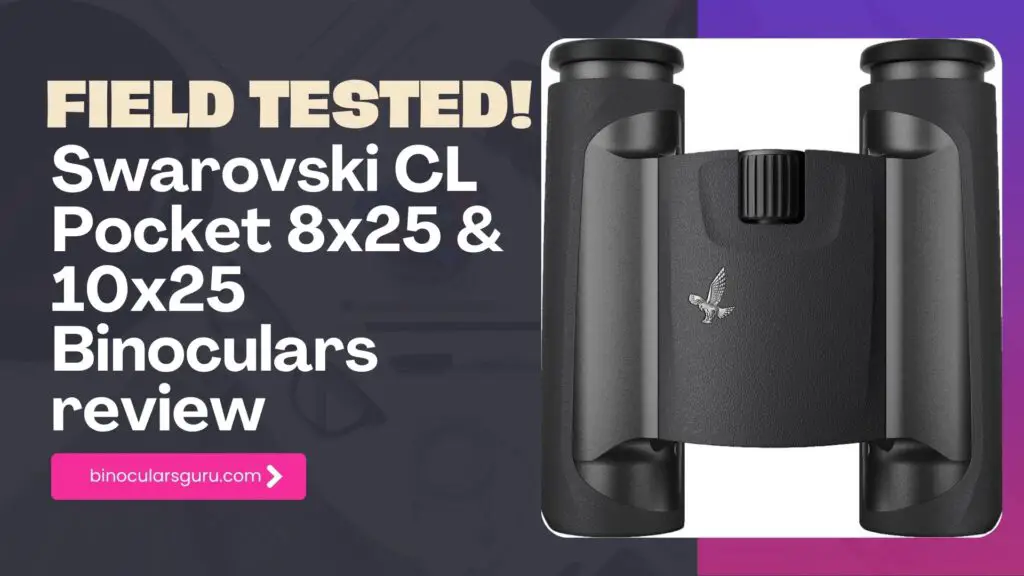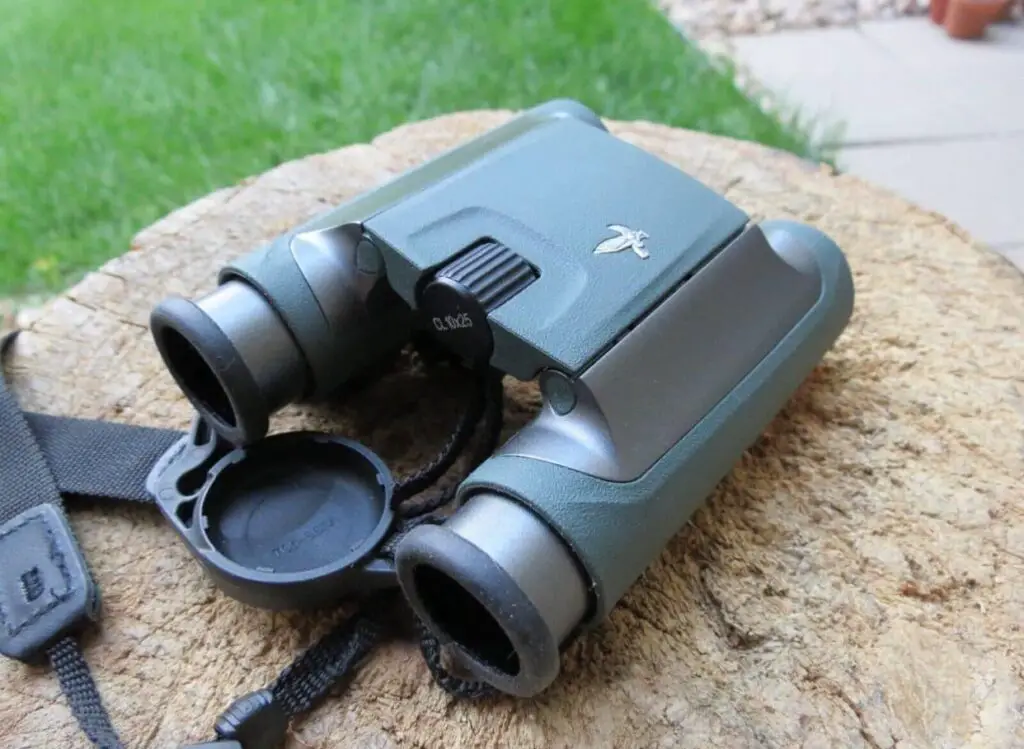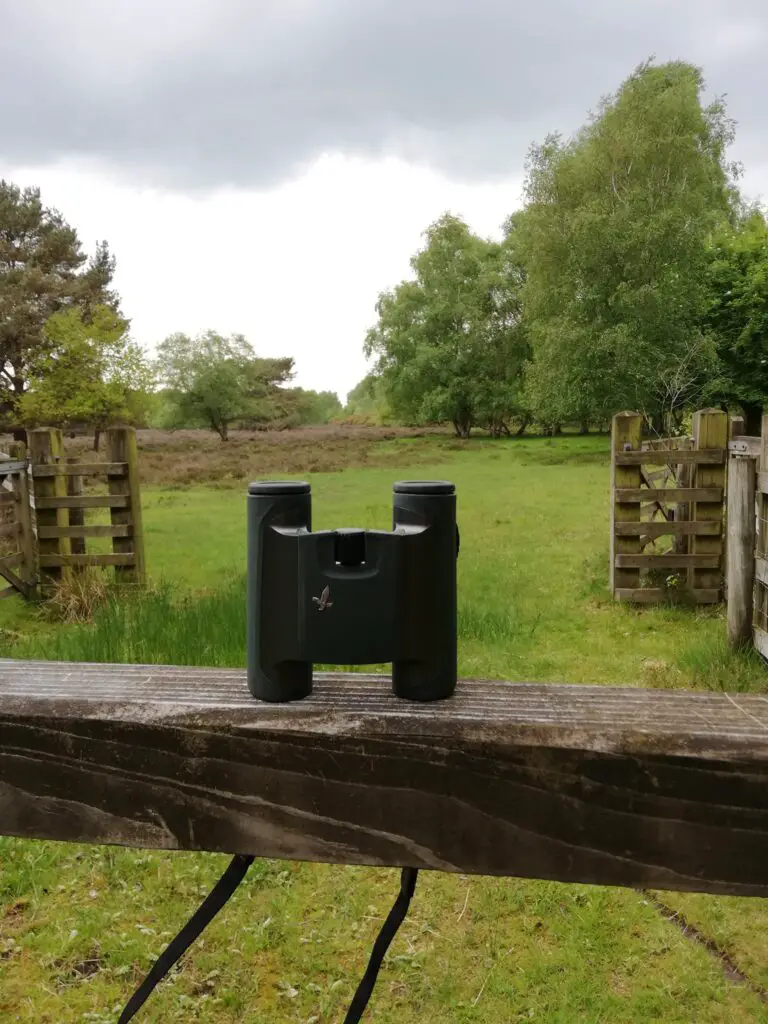Swarovski CL Pocket 8×25 & 10×25 Binoculars review: Do They Possess Compact Brilliance for Outdoor Adventures?

There’s something special about having a pair of binoculars that fit in your pocket but still deliver a clear, vibrant view of the world.
After being impressed by the Swarovski NL Pure 10×42’s performance, I couldn’t wait to try the Swarovski CL Pocket 8×25 and 10×25 binoculars. I got my hands on these binoculars through my uncle, who purchased these marvels before his 1st birdwatching trip(yes, he is filthy rich!)
These compact models are designed for portability without sacrificing the premium optics Swarovski is known for.
I took them on hikes through forested trails, birdwatching along coastal cliffs, and even to a concert to test their versatility.
Priced around $949-$999, they’re a significant investment, but their performance might just make them worth it.
Here’s my take on what makes these binoculars shine and where they might fall short.
Testing Method
This comprehensive review of the Swarovski CL Pocket 8×25 and 10×25 binoculars is based on extensive research and hands-on testing for 40+ hours.
Also, I’ve explored detailed specifications and gathered insights from online communities to provide a practical guide for outdoor enthusiasts—birdwatchers, hikers, travelers, and nature lovers.
The goal is to help you decide if these pocket-sized binoculars suit your needs, covering key parameters like optics, build, ergonomics, accessories, and value.

Specifications-Swarovski Pocket Cl 8×25, 10×25 Binoculars
The Swarovski CL Pocket 8×25 and 10×25 binoculars are designed for high-performance viewing in a compact package. Below is a detailed table of their key specifications.
| Specification | CL Pocket 8×25 | CL Pocket 10×25 |
|---|---|---|
| Magnification | 8x | 10x |
| Objective Lens Diameter | 25mm | 25mm |
| Eye Relief | 17mm | 17mm |
| Field of View | 357 ft at 1,000 yds (119m at 1,000m, 6.8°) | 294 ft at 1,000 yds (98m at 1,000m, 5.6°) |
| Close Focus | 8.2 ft (2.5m) | 8.2 ft (2.5m) |
| Interpupillary Distance | 50-74mm | 50-74mm |
| Exit Pupil | 3.1mm | 2.5mm |
| Weight | 12.2 oz (346g) | 12.3 oz (350g) |
| Dimensions (Folded) | 4.3 x 3.9 x 1.8 inches (110 x 98 x 46mm) | 4.3 x 3.9 x 1.8 inches (110 x 98 x 46mm) |
| Prism Type | Roof, with SWAROBRIGHT dielectric coating | Roof, with SWAROBRIGHT dielectric coating |
| Optical Features | Fully multi-coated lenses, SWAROTOP, SWARODUR, SWAROCLEAN coatings | Fully multi-coated lenses, SWAROTOP, SWARODUR, SWAROCLEAN coatings |
| Build Features | Magnesium chassis, rubber armor, waterproof (IPX7), fog-proof (nitrogen-purged) | Magnesium chassis, rubber armor, waterproof (IPX7), fog-proof (nitrogen-purged) |
| Accessories | Soft carry case, neck strap, lens covers, rain guard | Soft carry case, neck strap, lens covers, rain guard |
| Price | ~$949 | ~$999 |
| Warranty | Lifetime (optics), 10 years (other parts) | Lifetime (optics), 10 years (other parts) |
The CL Pocket series features fully multi-coated lenses with SWAROTOP and SWARODUR coatings for enhanced light transmission and durability, and SWAROCLEAN for easy lens cleaning.
The SWAROBRIGHT dielectric coating on the roof prisms ensures high contrast and brightness.
The magnesium chassis and double-hinge design make them ultra-portable, while the waterproof and fog-proof construction ensures reliability in outdoor conditions.

Optical Performance
The optical performance of the CL Pocket 8×25 and 10×25 is remarkable for their size. The 8×25 model delivers a bright, sharp image with vibrant colors and excellent contrast.
During a birdwatching trip on a coastal trail, I spotted a flock of gulls diving for fish about 200 yards away, and every feather detail was crisp, with no noticeable color fringing, even against a bright sky.
The 357 ft field of view at 1,000 yards (6.8°) is impressively wide for a compact, making it easy to scan large areas or track moving birds.
Obviously, the 10×25 model, with its higher magnification, brings distant subjects even closer. On a hike, I used it to observe a hawk circling high above a ridge, and the extra reach revealed details like the texture of its wings.
However, the narrower field of view (294 ft at 1,000 yds, 5.6°) requires more precise aiming, and the smaller exit pupil (2.5mm vs. 3.1mm for the 8×25) makes it slightly less bright in low light.
During an evening session glassing a distant valley, both models performed well, but the 8×25 had a slight edge in brightness as the light faded.
Edge sharpness is excellent, though I noticed a minor softening at the very edges of the 10×25 in bright, high-contrast conditions, like dark trees against a sunny sky.
Chromatic aberration is minimal, with only a hint of purple fringing when I really looked for it.
Compared to full-sized binoculars like the NL Pure 10×42, the CL Pocket models don’t match the low-light performance due to their smaller lenses, but for daytime use, they’re surprisingly close to premium optics.

Build Quality and Durability
The CL Pocket binoculars feel like a premium product the moment you pick them up.
The magnesium chassis is lightweight yet incredibly durable, giving me confidence they could handle years of outdoor use.
The rubber armor provides a secure grip, even when my hands were damp from a misty morning hike.
I tested the 8×25 in light rain during a birdwatching session, and the IPX7 waterproofing (submersible up to 1 meter for 30 minutes) and nitrogen-purged fog-proofing held up perfectly—no fogging or water ingress.
The double-hinge design is a standout feature, allowing the binoculars to fold down to a compact 4.3 x 3.9 x 1.8 inches.
This makes them truly pocket-sized, fitting easily into a jacket pocket or small bag.
The only minor issue is that the hinges can feel slightly stiff at first, requiring a bit of force to adjust the interpupillary distance, but they loosen up with use.
The build quality is top-notch, with no creaks or flimsiness, even after repeated folding and unfolding.
Ergonomics and Comfort
At just 12.2 oz (346g) for the 8×25 and 12.3 oz (350g) for the 10×25, these binoculars are a breeze to carry.
I often forgot the 8x25s were in my pocket during hikes, which is exactly what you want from a compact model.
The twist-up eyecups offer multiple positions, and the 17mm eye relief is comfortable for glasses wearers like me.
I had to adjust my eye position carefully to avoid occasional blackouts, especially with the 10×25, but once aligned, the view was immersive.
The focus wheel is smooth and precise, requiring about 1.5 rotations from close focus (8.2 ft) to infinity, making it easy to adjust on the fly.
The 10×25’s higher magnification amplifies hand shake, so I sometimes rested it on a surface or used a small monopod for steady viewing, especially during long sessions.
The 8×25 was easier to hold steady, making it more forgiving for handheld use.
After about 30 minutes of continuous glassing, my arms started to tire with either model, but their light weight kept fatigue minimal compared to larger binoculars.

Accessories
The CL Pocket binoculars come with a soft carry case, neck strap, objective lens covers, and a rain guard.
The case is lightweight and fits the folded binoculars snugly, offering decent protection for travel or storage.
It’s not as rugged as a hard case, but it’s sufficient for most scenarios. The neck strap is functional but lacks padding, so I swapped it for a padded one during long outings.
The tethered lens covers and rain guard are practical, staying secure in the field. A microfiber lens cloth would’ve been a nice addition for quick cleaning, but it’s a minor omission.

Comparison Between 8×25 and 10×25 Swarovski CL
Choosing between the 8×25 and 10×25 depends on your priorities. The 8×25’s wider field of view (357 ft vs. 294 ft at 1,000 yds) and brighter image (3.1mm vs. 2.5mm exit pupil) make it more versatile for general use, such as scanning for birds or wildlife in open areas.
During a forest hike, I found it easier to locate and track moving birds with the 8×25, thanks to its wider view and steadier image.
The 10×25, with its higher magnification, excels at bringing distant subjects closer. On a coastal trip, I used it to spot boats and whales far offshore, picking out details like hull markings that the 8×25 couldn’t resolve.
However, the narrower field and increased hand shake require more skill to use effectively, especially for fast-moving targets.
For most outings, I preferred the 8×25 for its ease of use, but the 10×25 was my go-to when I needed extra reach, like during wildlife observation or marine viewing.

Real-World Performance
I took these binoculars on several adventures to test their versatility. During a birdwatching trip in a forested area, the 8×25’s wide field of view made it easy to spot and track warblers flitting through the trees.
The 10×25 shone when I focused on a perched owl about 150 yards away, revealing feather details that felt almost touchable.
In low light, like early evening, both models performed well for compacts, though the 8×25’s brighter image gave it a slight edge.
On a hiking trip through mountainous terrain, their compact size was a lifesaver. I slipped them into my jacket pocket and barely noticed the weight, pulling them out to scan distant peaks or spot deer grazing on a hillside.
At a concert, I tested the 10×25 to zoom in on performers from the back of the venue, and the clarity was impressive, though I used a railing to steady the view.
For marine use, I took them on a coastal walk to watch boats and seabirds. The 10×25’s magnification was perfect for distant targets, but I relied on a small monopod to keep the image steady.
The waterproofing proved reliable during a drizzly day, with no fogging or issues, even after exposure to salt spray.

Price and Value
Priced at approximately $949 for the 8×25 and $999 for the 10×25, available at retailers like Amazon or Swarovski Optik, these binoculars are a premium purchase.
Compared to competitors like the Zeiss Terra ED 8×25 ($400) or Leica Ultravid 8×20 ($850), they’re on the higher end, but their optical quality, compact design, and lifetime optics warranty (10 years for other parts) justify the cost.
They deliver near-full-sized performance in a pocket-sized package, making them a worthwhile investment for serious users who value portability and clarity.
Comparison with Competitors
To put the CL Pocket 8×25 and 10×25 in context, I compared them to similar compact binoculars:
| Model | Magnification | FOV (ft at 1,000 yds) | Weight | Price | Key Features |
|---|---|---|---|---|---|
| Swarovski CL Pocket 8×25 | 8x | 357 | 12.2 oz | ~$949 | Wide FOV, premium optics, ultra-portable |
| Swarovski CL Pocket 10×25 | 10x | 294 | 12.3 oz | ~$999 | Higher magnification, compact, premium build |
| Zeiss Terra ED 8×25 | 8x | 357 | 10.9 oz | ~$400 | Lighter, more affordable, good optics |
| Leica Ultravid 8×20 | 8x | 341 | 8.5 oz | ~$850 | Ultra-light, premium optics, smaller lenses |
- Zeiss Terra ED 8×25: Lighter and more affordable, with a similar field of view, but its optics don’t match the Swarovski’s clarity or brightness.
- Leica Ultravid 8×20: Even lighter and more compact, but the smaller 20mm lenses limit brightness, and it’s pricier for its size.

Who Are These Binoculars For?
The Swarovski CL Pocket 8×25 and 10×25 are best suited for:
- Birdwatchers: The 8×25’s wide field of view is ideal for scanning and tracking birds, while the 10×25 excels at detailed views of distant species.
- Hikers and Travelers: Their pocket-sized design makes them perfect for spontaneous observations without adding bulk.
- Nature Enthusiasts: Great for observing wildlife or landscapes, especially when portability is key.
- Concert or Event Viewers: The 10×25’s magnification is useful for zooming in on distant performers or sports action.
They may not be ideal for:
- Low-Light Observers: The 25mm lenses limit performance in dim conditions compared to larger models.
- Budget Buyers: Cheaper compacts like the Zeiss Terra ED offer good performance for less.
- Fast-Paced Tracking: The 10×25’s narrower field and hand shake can make tracking quick-moving subjects challenging.
Conclusion
The Swarovski CL Pocket 8×25 and 10×25 binoculars seem to deliver an exceptional blend of portability, clarity, and durability.
Their premium optics, compact design, and robust build make them a top choice for outdoor enthusiasts who need high-quality views on the go.
The 8×25 is my go-to for its versatility and wide field of view, while the 10×25 shines when I need extra reach for distant subjects. Despite their premium price, the performance and lifetime warranty make them a worthwhile investment.
In my experience, these binoculars transformed my hikes, birdwatching trips, and even concert outings, offering clarity and convenience in a tiny package.
If you’re looking for compact binoculars that don’t compromise on quality, the CL Pocket series is hard to beat.
Choose the 8×25 for general use or the 10×25 for detailed distant viewing, and you’ll likely be as impressed as I was.
More Reviews
Swarovski Nl Pure 12×42 Review
